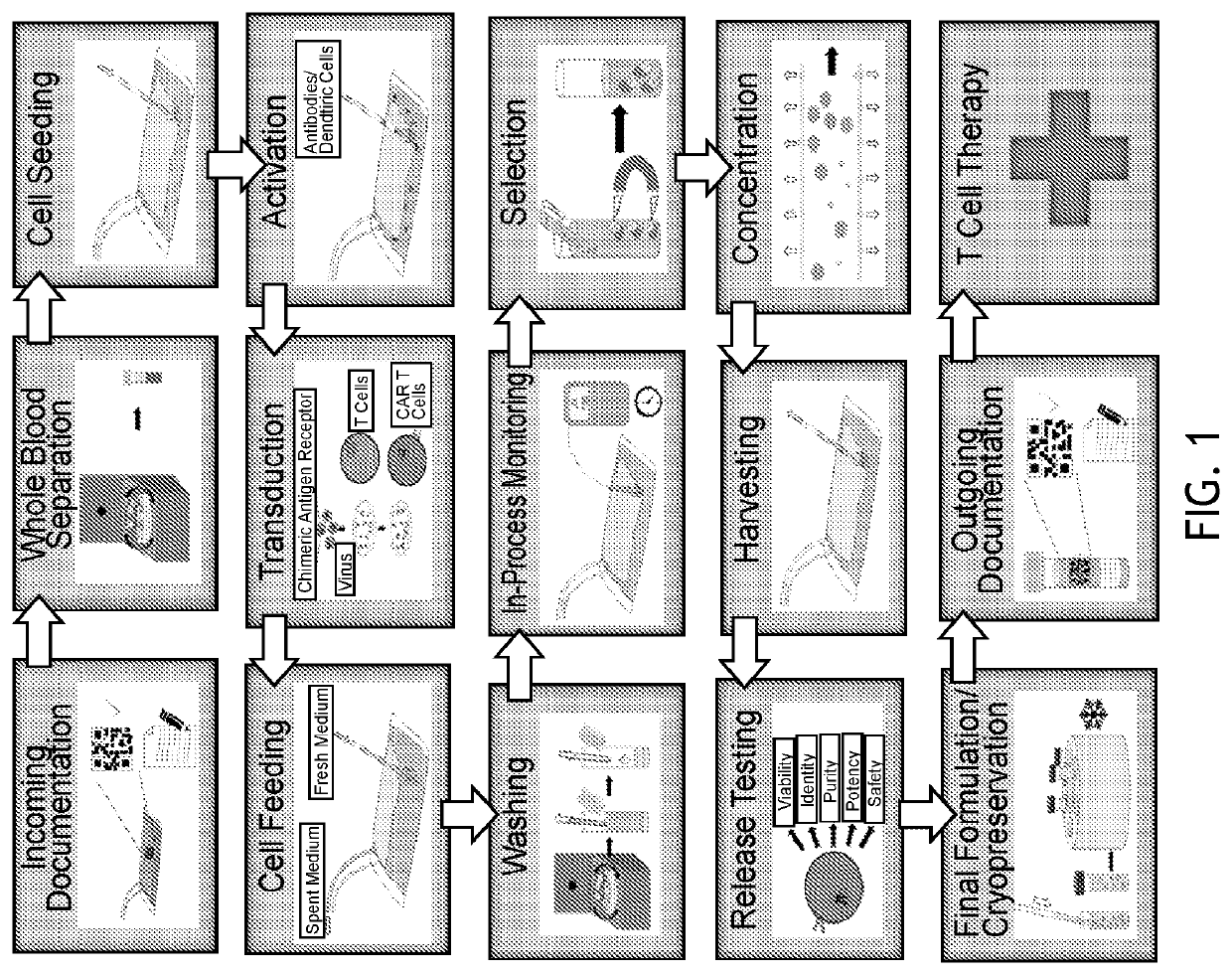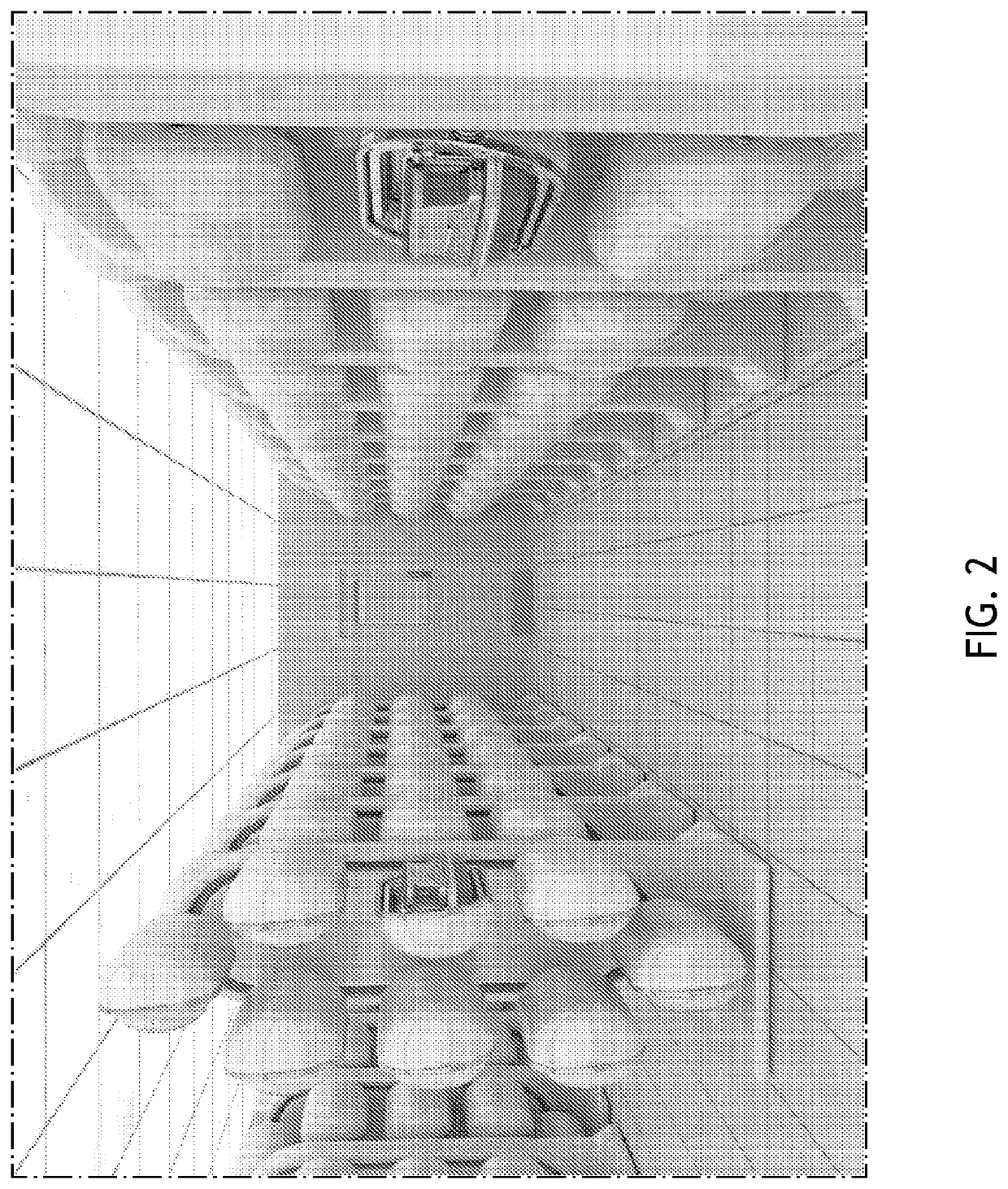End-to-end cell therapy automation
a cell therapy and automation technology, applied in the field of end-to-end cell therapy automation, can solve the problems of high manufacturing cost relative to reimbursement, affecting the commercialization of cells, and requiring significant manual involvement in the production of these cells, and achieve the effect of increasing the working volume of the chamber
- Summary
- Abstract
- Description
- Claims
- Application Information
AI Technical Summary
Benefits of technology
Problems solved by technology
Method used
Image
Examples
examples
[0363]Example 1—Automated Production of CAR T Cells Using the COCOON System
[0364]In this Example, GFP and HER-2 lentivirus were used to transduce T cells using the following process parameters: starting inoculation of 60 million peripheral blood mononuclear cells (PBMC), CD3 / CD28 activation, IL-2 and IL-7 were supplemented into T-cell growth media for culture expansion. Single-use sensors in the disposable cassette were used to monitor temperature, pH and optical density (OD) in real time. The multiple cassette chambers that are connected via fluidic channels enabled automated feeding and addition of process components. Some of the chambers are temperature controlled at 4° C. for media and reagent storage, while others included elements for warming, mixing, washing, and concentrating cells, allowing for a fully enclosed process. The in-process samples were drawn for cell counts and viability. At the end of the harvesting process, FACS analysis was performed with the following panel:...
example 2
n of Activation Methods in the COCOON System
[0370]This Example compares cell culture performance using different methods of activation in the clinical scale production of CAR T cells in the COCOON automated manufacturing system and a PERMALIFE Bag.
[0371]Magnetic anti-CD3 / anti-CD28 DYNABEAD activator beads may be used to activate T cells. These beads provide the two necessary stimulatory signals to support effective T cell activation. Another method of activating naïve T cells may utilize a soluble anti-CD3 antibody (OKT3). OKT3 is a monoclonal IgG2a antibody, originally used as an immunosuppressant. The costimulatory signals can be provided by accessory cells. Initiating T cell culture from a mixed population of peripheral blood mononuclear cells (PBMC) can provide the necessary accessory cells to support T cell activation when using OKT3.
[0372]As OKT3 and DYNABEADS utilize distinct activation mechanisms, the selection of one method over the other could influence the final product c...
example 3
ion Via Electroporation with a Cell Engineering System
BACKGROUND
[0417]The Octane Cocoon™ system is an automated, closed, end-to-end bioreactor system for the manufacture of cell therapy products. Octane's Automated Cell & Tissue Engineering System (ACTES) is comprised of three main components: the base instrument, software, and customizable disposable cassette. The Cocoon™ system is capable of automated isolation, expansion, concentration, and buffer exchange for both upstream and downstream cell culture processes.
[0418]An electroporation unit enables transfection of cells traditionally known to have low transfection efficiency via electroporation and other non-viral methods, including primary cells, stem cells, neurons, and resting or non-proliferating cells. The system includes an electroporation unit, electroporation solutions, electroporation Cartridges and optimized electroporation protocols. The electroporation unit is comprised of a Core Unit and 1-3 additional functional add...
PUM
| Property | Measurement | Unit |
|---|---|---|
| time | aaaaa | aaaaa |
| temperature | aaaaa | aaaaa |
| temperature | aaaaa | aaaaa |
Abstract
Description
Claims
Application Information
 Login to View More
Login to View More - R&D
- Intellectual Property
- Life Sciences
- Materials
- Tech Scout
- Unparalleled Data Quality
- Higher Quality Content
- 60% Fewer Hallucinations
Browse by: Latest US Patents, China's latest patents, Technical Efficacy Thesaurus, Application Domain, Technology Topic, Popular Technical Reports.
© 2025 PatSnap. All rights reserved.Legal|Privacy policy|Modern Slavery Act Transparency Statement|Sitemap|About US| Contact US: help@patsnap.com



